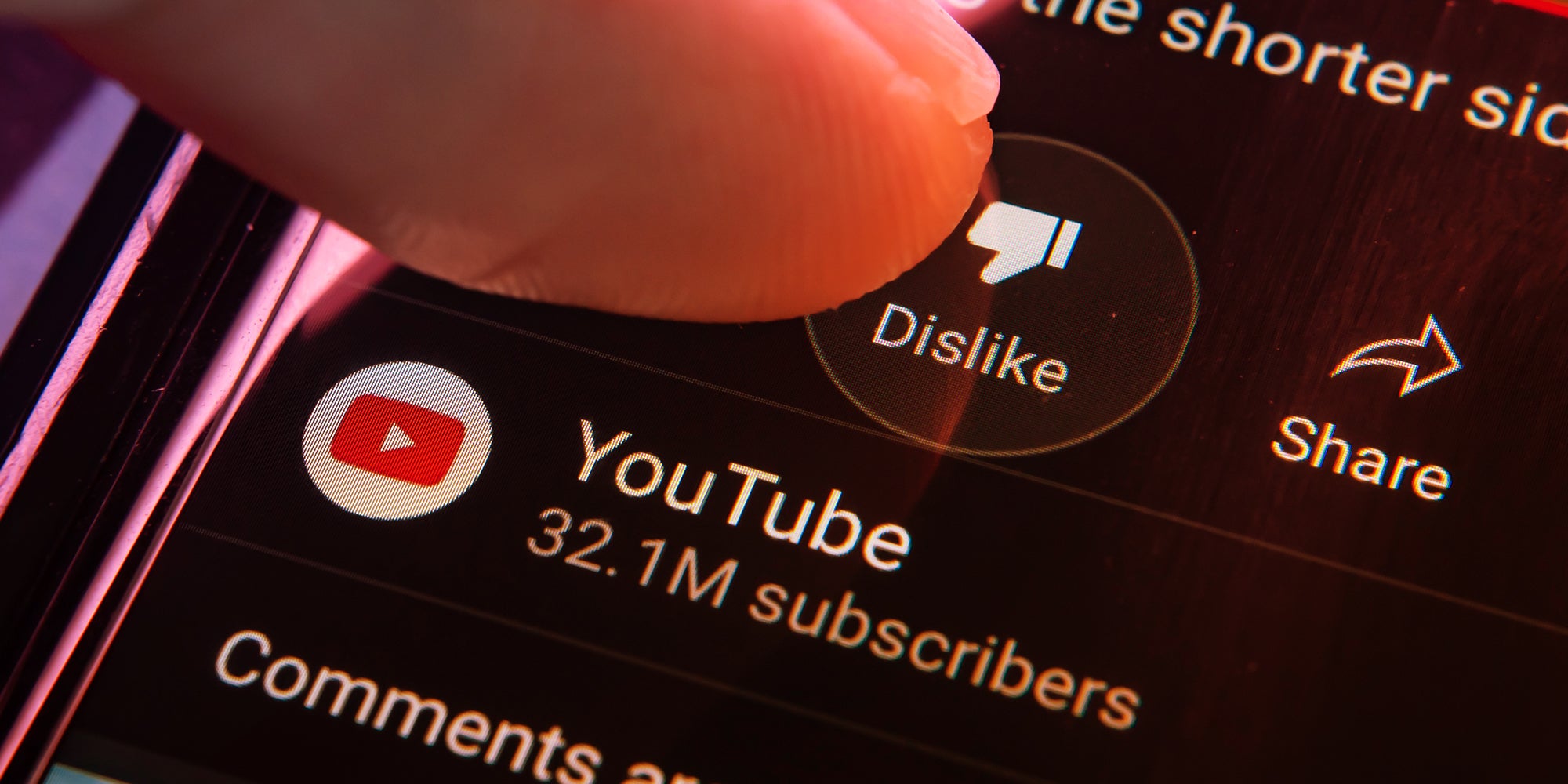
In November 2021, YouTube made the dislike count private across the platform. The thumbs-down button has been a ubiquitous part of the site since its introduction in March 2010, allowing viewers to share less-than-positive thoughts on a video in the simplest way possible.
According to a blog post announcing the change, the goal of ending the public tally was to “reduce behavior that aims to silence and harass creators.” ” YouTube felt the button was being used maliciously to attack smaller creators.
The button still has uses — according to the blog post, creators can still see the number of dislikes on their videos, and supposedly dislikes affect what shows up on your recommended feed (although who knows how YouTube’s algorithm actually works).
But to the average viewer, who probably spent years on the platform being able to press the dislike button to publicly endorse or condemn a video, its current purpose has been obfuscated, with users confused about why it’s still even there.
That confusion over the purpose of the dislike button, along with rumors about dislike counts spiraling wildly out of control, is why I think we should bring it back.
Some online tools claim to show the dislike numbers behind YouTube’s iron curtain, but they are less than perfect. The most popular is Return YouTube Dislike, a browser extension that claims it can show how many dislikes are on a video.
But if you look through its FAQ, Return YouTube Dislike gets its information from an archive of what YouTube used to provide before shutting down the dislike API, paired with “extrapolated extension user behavior.” The extension tracks users who dislike a video and are using the extension, and then it creates a ratio that it thinks accurately reflects the real numbers.
Essentially, it’s more of a guess than a real telling of the numbers. This wonky interpretation of the behavior of a small set of YouTube viewers relied on for over a decade has already caused some issues.
For example, over the weekend, Jimmy “MrBeast” Donaldson released his latest video. Donaldson has been in controversy over the past few weeks, with allegations of dangerous conditions on his Amazon show “Beast Games,” a former employee claiming Donaldson fakes his videos, and another former collaborator excommunicated from the company due to claims they chatted inappropriately with a minor.
Viewers with the extension noticed that the video was getting an obscene amount of dislikes, pulling in over one million in just a few hours. The news spread quickly through news aggregation accounts, like DramaAlert. The account claimed in a now-deleted tweet that the video had received half a million dislikes in the first hour.
DramaAlert then apologized for the tweet, writing in a follow-up that the third-party app they used “is not to be trusted.” DramaAlert claimed that a member of MrBeast’s team provided a screenshot showing that there were only 20,632 dislikes.
An account claiming to be the creator of the extension responded on GitHub, saying that “87k users with the extension disliked” the MrBeast video. “I simply do not see it possible for the video to be performing better than channel average despite all the controversy,” the creator said.
But ultimately, none of this chaos and confusion would even need to happen if we just had access to the dislike count number. It’s clear the desire for a public count isn’t going away anytime soon. Viewers use it as a barometer for video reception, which becomes ever more important as influencers inch ever closer to becoming the quintessential modern celebrity.
While it’s certain that hiding the number does limit the number of dislike spam and hate raid attacks, where viewers of a certain creator bombard another with dislikes, it doesn’t stop toxicity. Dislikes still impact a creator’s visibility on the app. Creators still get harassment, but now the publicly visible battleground is the comment section or other parts of social media.
So, given all the confusion, just bring back the dislike button — and own the fact that drama and disapproval are just parts of YouTube’s culture.
Further reading:
- YouTube to Allow Creators to Appeal Demonetization
- Copyright Trolls Outsmart YouTube’s Policies To Terminate Channel
- Hijacking YouTube: The Unseen Data Theft from Your Favorite Creators
- Only Have 500 YouTube Subs? You’re Eligible for Monetization
- Is YouTube Optimization Dead?
- Want more coverage of the creator economy? Sign up for our newsletter.




